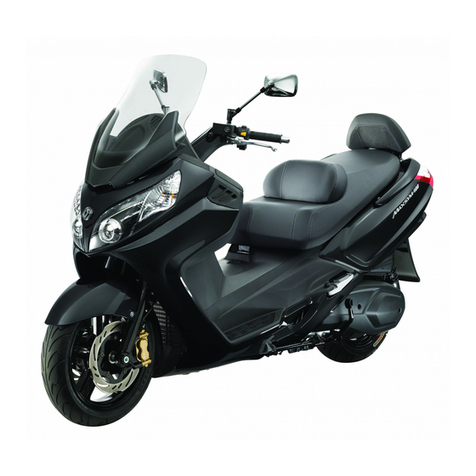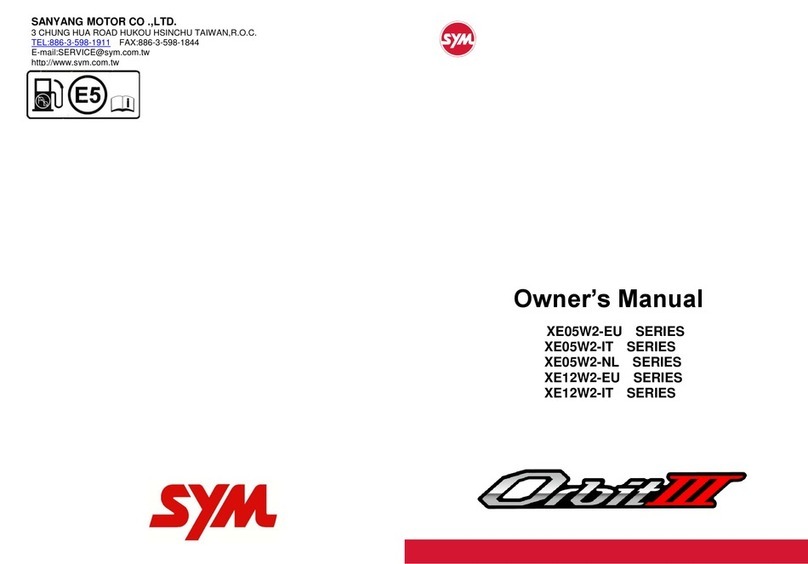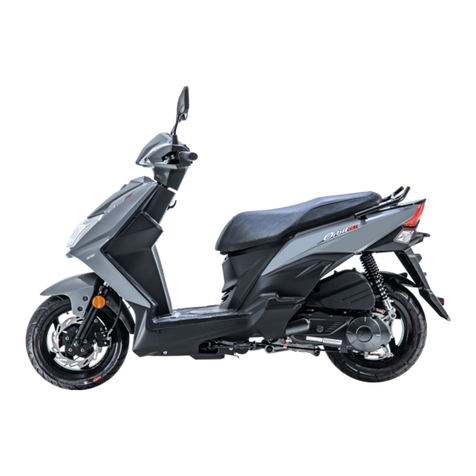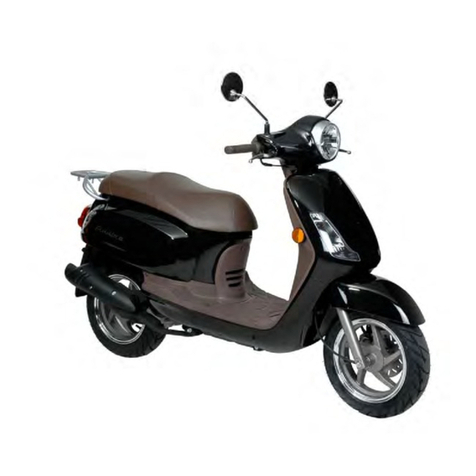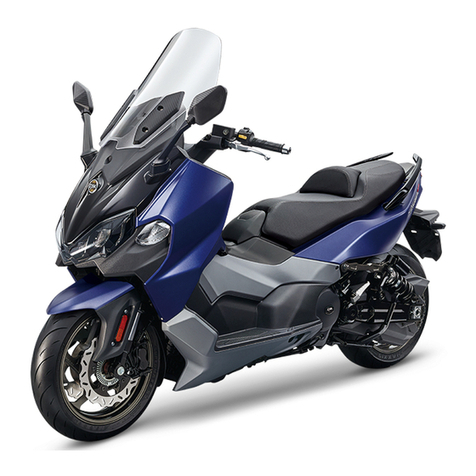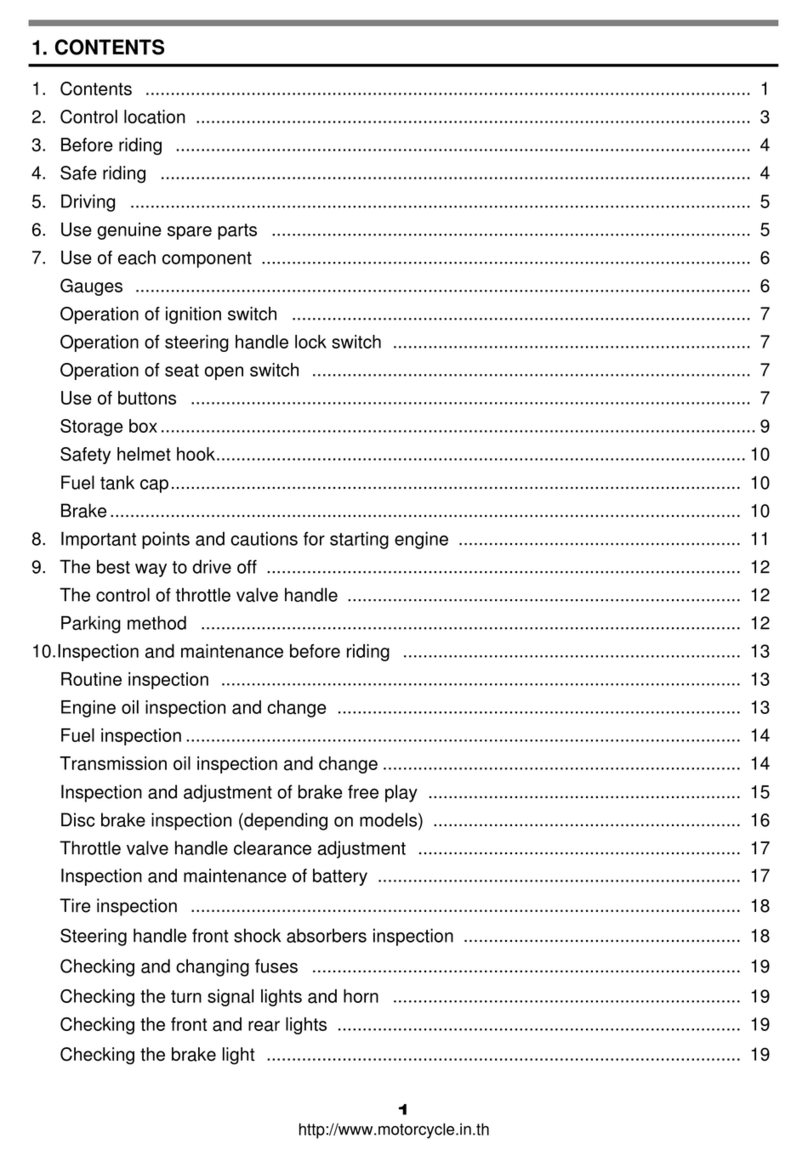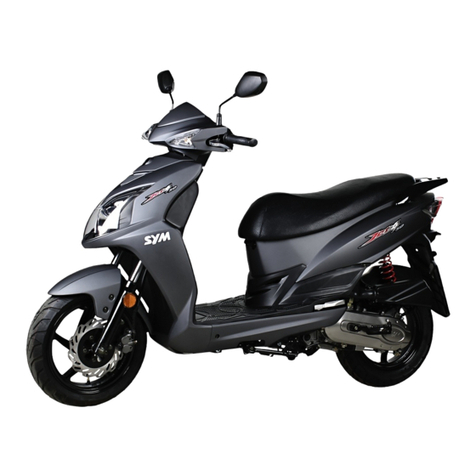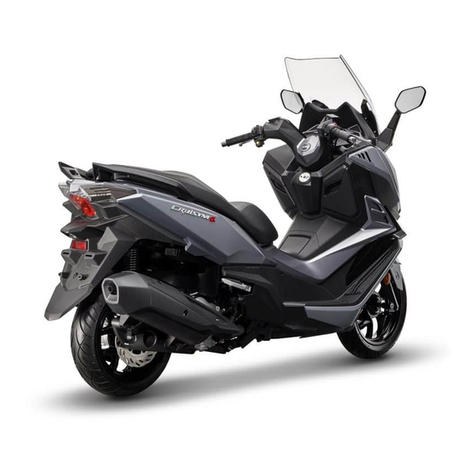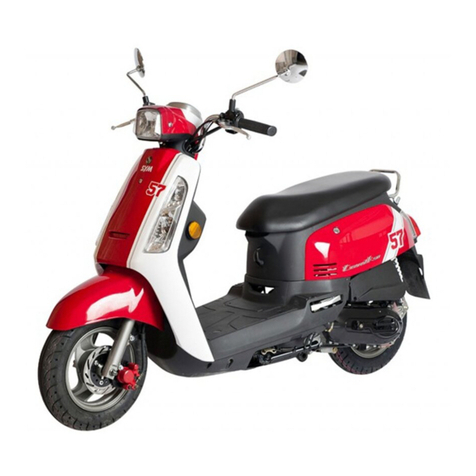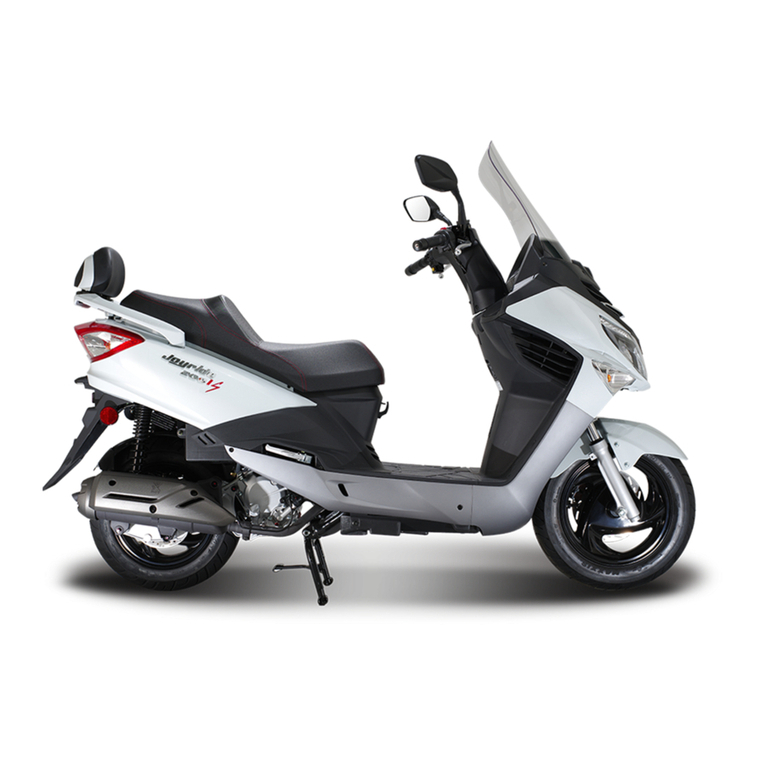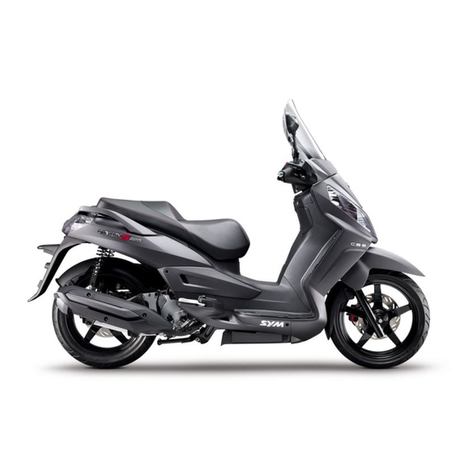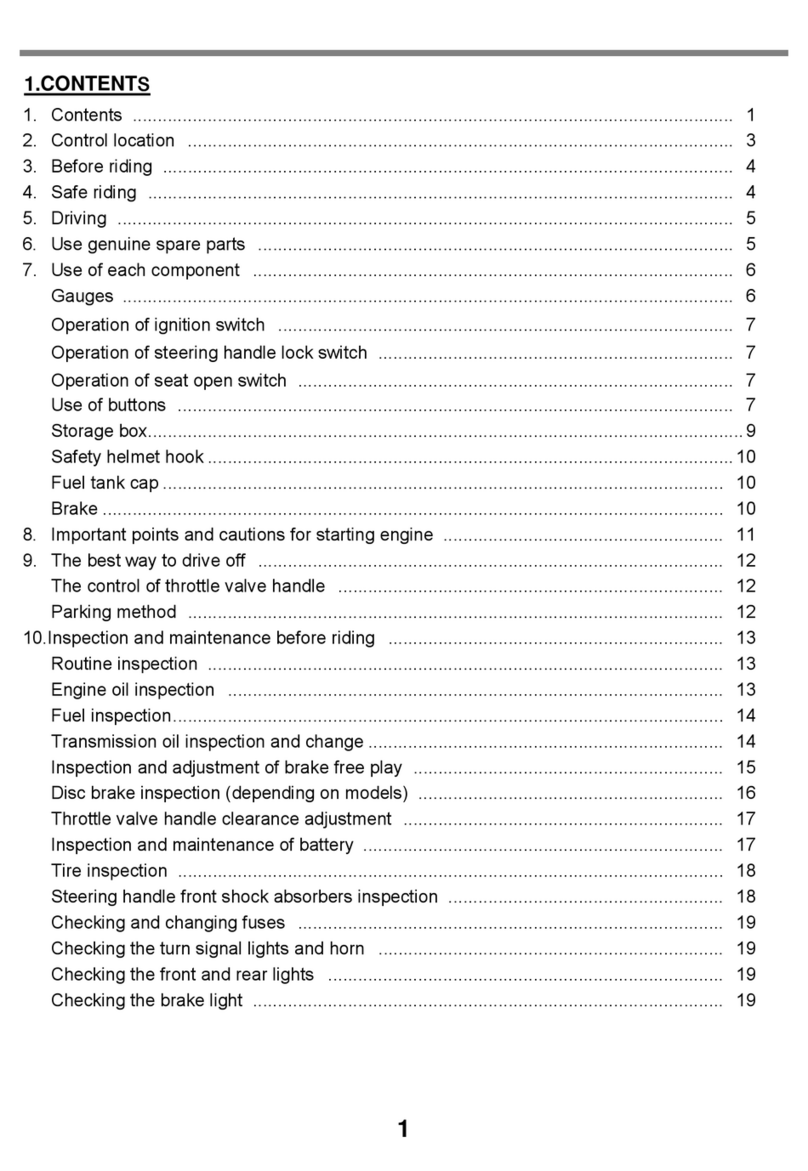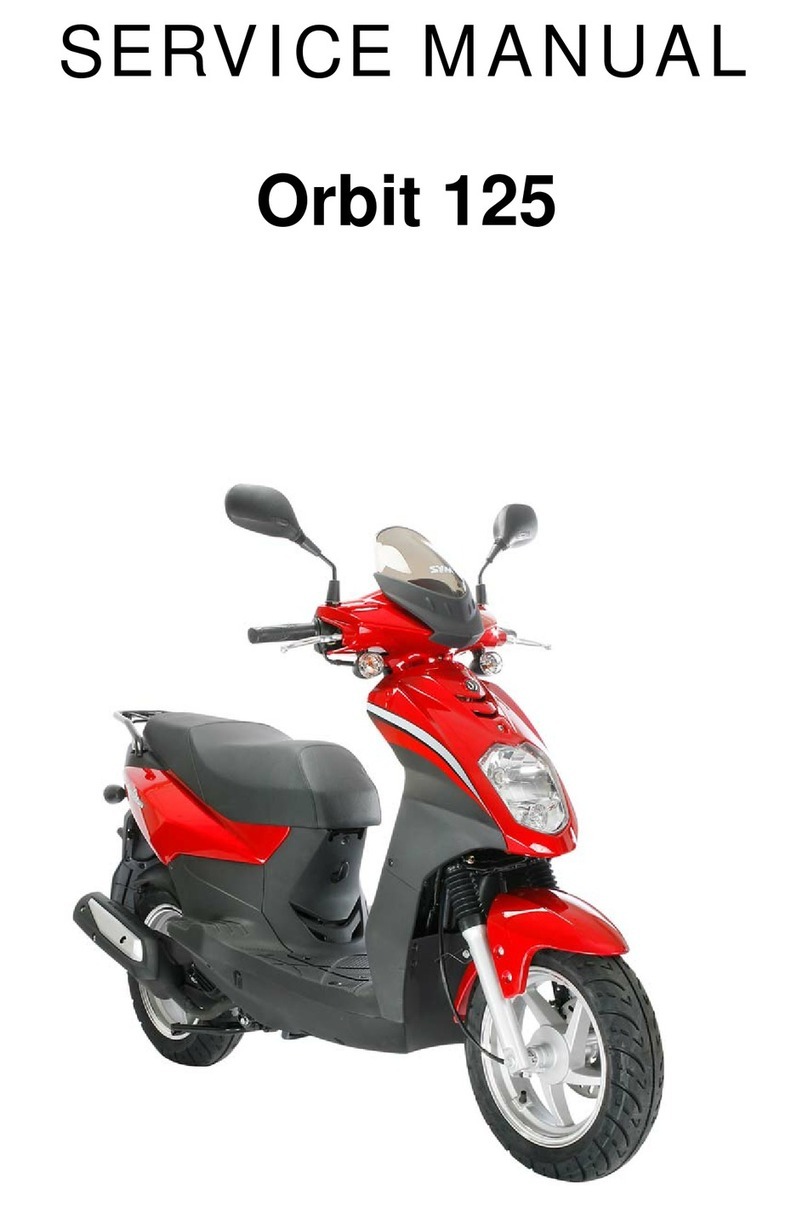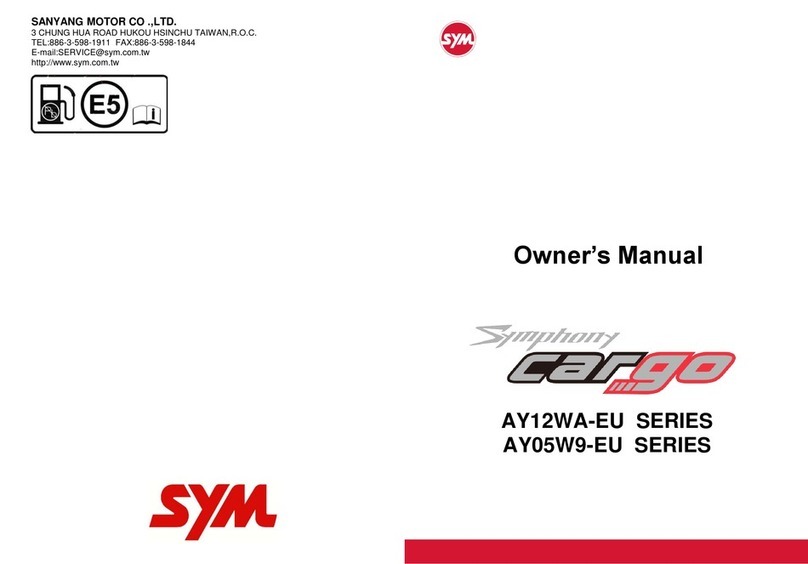
9
§DESCRIPTION OF ANTI THEFT INTELLIGENT LOCK (for Intelligent lock model) §
1. Set the anti-theft Alert: when the motorcycle ignition lock is off
Acousto-optic warning: press the remote control security "lock" button for a short time, the horn
will sound Bi, the direction light will flash once, and the lock head will be locked. After 3 seconds, it
will enter the acousto-optic warning state.
Silent alert: press the "mute" button of the remote control for a short time, the horn will sound Bi,
the direction light will flash once, and the lock will be locked. After 3 seconds, it will enter the silent
alert state.
2. Remove anti-theft alert and automatic recovery alert
In the alert state, press the "unlock" key of the remote control, the horn will sound bi - Bi, the
direction light will flash twice, and the lock will unlock to release the alert. If ACC is not turned on or
the host is not vibrated within 30 seconds, the alarm system will be deemed to have been removed
by mistake and will automatically return to the original anti-theft alarm state.
Note: if the "unlock" key is pressed twice in 2 seconds, it will be completely released and will no
longer automatically return to the alert state.
3. Prompt set alert
Stop and turn off the engine in the release state (turn off the main switch), If the alarm is not set
after 5 seconds, the horn will sound bi - bi - Bi, and the direction lights will flash three times.
4. ACC emergency alarm
In the anti-theft alarm state, if the switch lock is opened by force (main switch is on), the horn will
give an alarm, and the direction lights will flash synchronously. You can press the remote control to
"unlock" Key or close the switch lock to stop the alarm.
When leaving the vehicle, please make sure that the main switch is turned to
"lock" and lock the direction handle
5. Lock is automatically locked
In the release state, the knob lock is turned from off to lock, the lock head will lock automatically
after 1 second, and it will enter the sound and light warning state after 3 seconds. In the lock state,
press the release key of the remote control once. If the lock gear is not exited within 15 seconds, it
will automatically return to the alert state. In the release state, the lock gear is turned to the off gear,
with three beeps in 5 seconds, and the lock will be automatically locked in 15 seconds.
6. Protection of solenoid valve for malicious operation
In 10 seconds, if the solenoid valve is operated continuously for 10 times (press "unlock" and
"unlock" for a short time), it is judged as malicious operation, and the system will automatically
protect it. (10 times of single function operation and 5 cycles of arming / releasing cycle).
In the protection state, press the remote control host to respond normally, but the lock solenoid
valve does not respond (does not act) 15 seconds later, it will automatically exit the protection and
return to normal.
